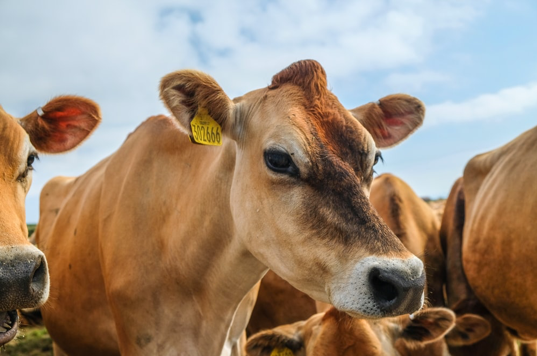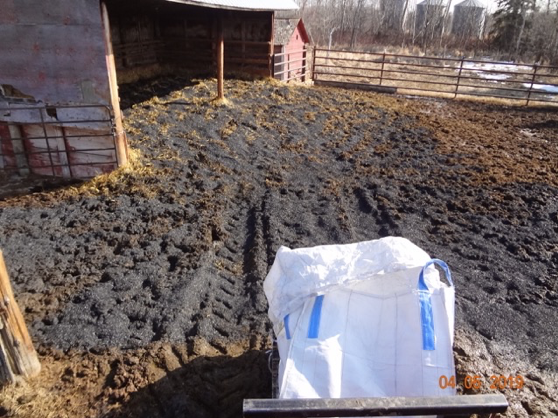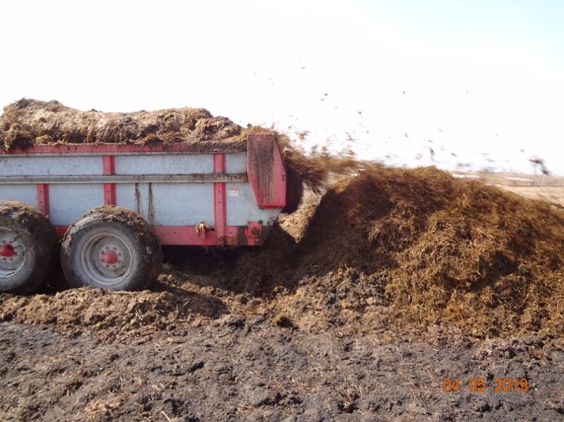The Wisdom of Agricultural Co-Composting of Biochar and Animal Manure
SoilMatrix Newsletter No. 17
The Wisdom of Agricultural Co-Composting of Biochar and Animal Manure

The topic of co-composting animal manures with biochar has risen in importance since about 2010 with the publication of an increasing number of research papers on this topic, including an astounding research discovery at the Canadian Light Source facility in Saskatoon, Saskatchewan. This research demonstrated the way in which organic materials physically coat the surfaces of biochar particles over a period of time during co-composting of biomass with biochar 2.
Land application of compost is an age-old agricultural method of returning nutrients to soils. However, compost additions to soils can result in substantial emissions of greenhouse gas, especially N2O, which needs to be controlled during making and using compost containing high N-loads, such as chicken manure. Some farmers in some countries are now pursuing the option of adding granulated biochar to animal bedding for the co-benefits of improving animal health and enhancing the eventual composting value of this material. The eventual applications of co-composted biochar-manure mixtures is demonstrating benefits for soils and plants.
We already know that biochar blended with finished compost makes a great soil amendment to promote healthy plant growth. All you need to do is run a Google search to find a vast amount of information on this. However, why add biochar to animal bedding material destined for manure compost production?

What we already know about biochar’s nutrient holding and moisture retention capabilities along with its ability to stimulate microbiological populations of beneficial bacteria and fungi when amended into soils, leads to the possibility for these added benefits for co-composting with other organic materials. Significant numbers of research projects have been underway and are continuing with positive biochar-manure co-composting benefits being substantiated. These benefits include:

- Shorter composting time requirements 1
- Absorbs leachate generated during the composting process 2, 3
- Absorbs nutrients in the leachate and in the organic matter of the compost
- Retains moisture during the composting process
- Reduced N2O emissions 4, 5 6,
- Reduced CH4 emissions
- Reduced NH3 emissions
- Provides a bulking agent
- Reduces odor
- Increases Cationic Exchange Capacity (CEC) 5
- Minimal degradation of the carbon material is observed, rendering it an effective means of carbon sequestration 5
- Surfaces of biochar particles become coated with organic material resulting in significant plant available nutrients 2, 3
Although these benefits have been demonstrated by small plot tests and field trials, in some cases, much more field experimentation and demonstration will be needed. AirTerra is seeking to work with experimental farmers to supply the necessary high-quality biochar to fully verify these findings. We are anticipating a revolution in regenerative farming as a result of these early (or late depending on how you see it) explorations of what we and others are calling “Carbon Farming”.
References:
- Ted Talk on biochar-manure co-composting https://www.youtube.com/watch?v=Z4GgHEPA3Yc
- Nikolas Hagemann, Stephen Joseph, Hans-Peter Schmidt, et al, “Organic coating on biochar explains its nutrient retention and stimulation of soil fertility”, Nature Communications, October, 2017, https://www.nature.com/articles/s41467-017-01123-0.pdf?origin=ppub
- Canadian Light Source, “Scientists discover why biochar fertilizers work so well”, http://www.lightsource.ca/news/details/scientists_discover_why_biochar_fertilizers_work_so_well.html
- Claudia Kammann, et al, “Biochar as a tool to reduce the agricultural greenhouse-gas burden – knowns, unknowns and future research needs”, Journal of Environmental Engineering and Landscape Management, Published on June 28, 2017 https://www.tandfonline.com/doi/pdf/10.3846/16486897.2017.1319375?needAccess=true
- Katharina Prost, “Biochar Co-Composting with Farmyard Manure”, Journal of Environmental Quality, February 13, 2012 https://s3.amazonaws.com/academia.edu.documents/45651957/Biochar_Affected_by_Composting_with_Farm20160515-10629-18emll4.pdf?response-content-disposition=inline%3B%20filename%3DBiochar_Affected_by_Composting_with_Farm.pdf&X-Amz-Algorithm=AWS4-HMAC-SHA256&X-Amz-Credential=AKIAIWOWYYGZ2Y53UL3A%2F20191201%2Fus-east-1%2Fs3%2Faws4_request&X-Amz-Date=20191201T225005Z&X-Amz-Expires=3600&X-Amz-SignedHeaders=host&X-Amz-Signature=525d4c6a56064313ed71ffb77bf1099c164b492d9c1e172bab6738b10b1c4033
- Yinghong Yuan, et al, “Is Biochar-manure co-compost a better solution for soil health improvement and N2O emissions mitigation?”, EPA, 2017 https://www.ncbi.nlm.nih.gov/pmc/articles/PMC5920545/

Comments